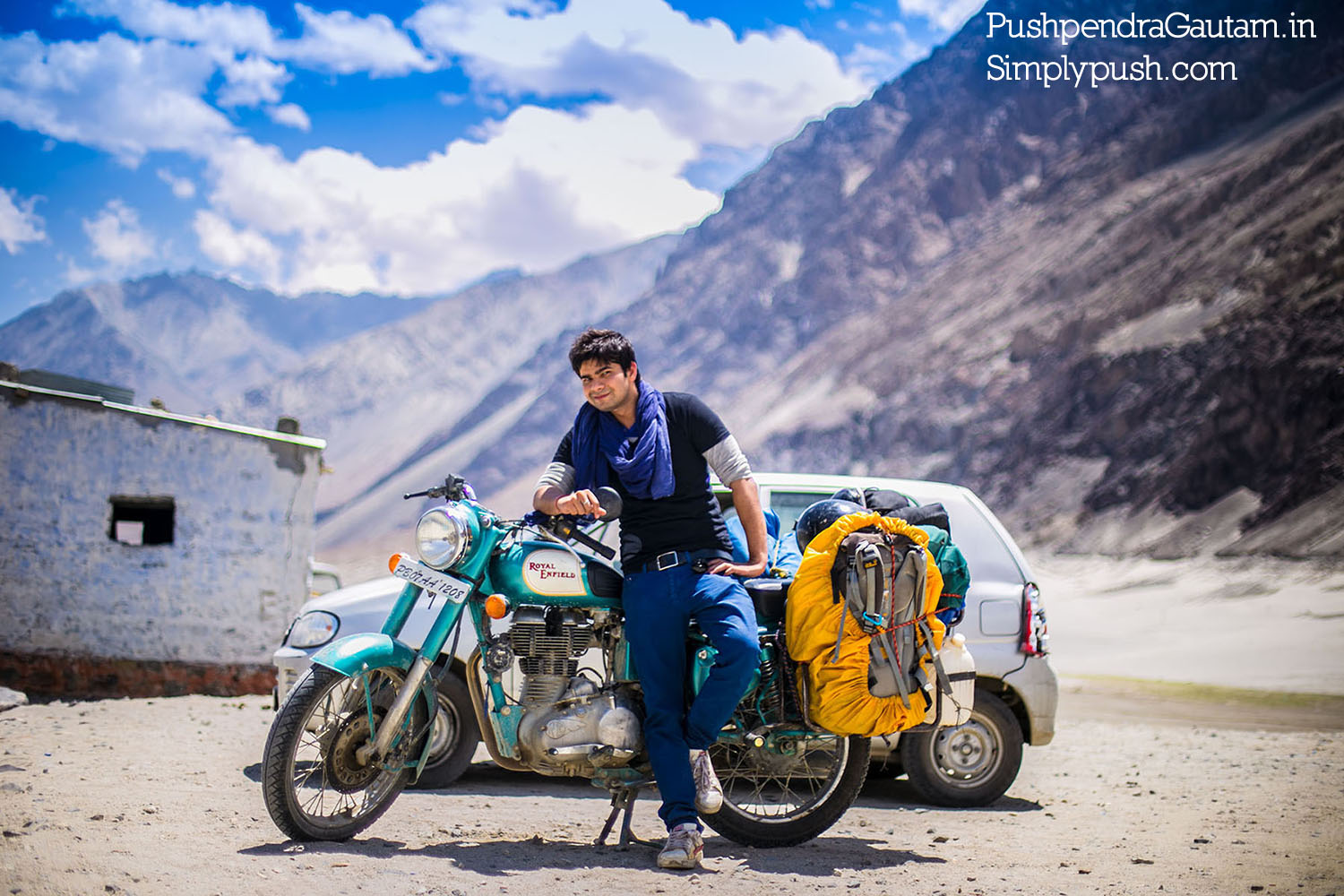 SINGLE TRACK VEHICLES – Motorcycle
SINGLE TRACK VEHICLES – Motorcycle
Motorcycles have recently become extremely popular with tourists traversing India. Nothing unusual, because this way of traveling not only gives you greater independence, but also allows you to get to know the real face of this exotic country. It is true that motorized tourists often complain about the low driving comfort and difficulties in contacts and communication with the local population, but they are attracted to adventures and experiences, with which they would never come into contact, traveling by public transport.
What to take? Even though an international driving license is not compulsory in this country, it's good to have them with you, when he traverses the wilderness of India.
You can bring the helmet with you or buy it on site. A good quality helmet costs an average of 500 do 600 INR. You shouldn't buy cheaper ones, as they do not provide good protection while driving. Leather clothes will also come in handy, gloves, boots and waterproof clothing.
It is best to place your luggage in several smaller bags, because a larger backpack can become a hindrance while driving.
On the Roads Truck drivers pose the greatest risk on the roads, who do not follow the rules of the road. There are many obstacles while driving, starting with herds of animals, which suddenly run onto the road, and ending with car wrecks, often carelessly left in the middle of the road.
Motorcyclists must have good orientation in the field, because traveling, they are only on their own. Advice from random passers-by will rarely lead you to your destination. Hindus, when asked for directions, they usually respond, that you should go "straight all the time", and in the meantime it turns out, that this "straight road" consists of two right turns, three to the left and a few forks! They rarely distinguish between such concepts, as right or left, and only a few of the inhabitants of rural areas speak understandable English. However, they are generally very friendly and willing to talk to tourists.
In general, there should be no problem finding a place to park your motorcycle; thefts are rare here. However, you have to get used to it, that Indians treat these vehicles as public property: sit on them, looking in mirrors or manipulating levers.
Drivers' conflicts with the Indian police are very rare. The best way to avoid conflict with the law is to be polite and smile friendly, even if traffic regulations are broken in front of officers.
Any witnesses or people involved in an accident should report it to the police immediately and not touch anything, until her arrival. One of the tourists found out for himself that this rule is right, when he was stopped on 3 days in custody, as a suspect in causing the accident, therefore only, that even before the police showed up, he took the injured child to the hospital. Motorcyclists should not travel too long distances in one day, because it weakens concentration, necessary while driving. Best, when the average speed of people traveling on busy highways is 50 km/h, and on narrow roads it does not exceed 10 km/h. On routes with good surface conditions and medium traffic, it is possible to cover from 100 do 150 km.
Traveling at night is often very dangerous, because drivers risk collisions with poorly lit vehicles. When there is a significant distance to your destination, it might be worth traveling by train, taking with you, of course, motorcycle. The fee for its transportation is the same, what a ticket 2. class. When paying the fee in the expedition baggage, the motorcycle is packed in a box filled with straw. Before traveling, the fuel tank should be emptied and a piece of paper affixed to the vehicle with the name of the owner, passport number and purpose of travel.
Repair and maintenance Because every Indian, who can use a screwdriver and a wrench, immediately becomes a mechanic, or mistri, be very careful, when you have your vehicle repaired. So it's best to bring basic tools with you and fix simple faults yourself. In workshops you must keep your eye on the vehicle, because mechanics often take the opportunity to exchange parts.
Original spare parts, purchased from authorized dealers, they are quite expensive compared to these, which local mistri sell.
Used motorcycle owners should check all bolts and nuts every few days, which often loosen on the rough roads of India. It is better to tighten them every day than to spend money on new ones. You will also need to check the oil level regularly. Because its quality is not the best here, you have to change it and clean the filter every few thousand kilometers.
Tire punctures Tourists traveling around India by motorbikes go to a tire vulcanization point on average once a week, which are not lacking in this country. The tire for the rear wheel of an Enfield motorcycle costs approx. 500 INR.
Fuel The price of gasoline in India does not differ from Polish prices. A liter of this fuel costs money 18 INR; diesel fuel is much cheaper, because you only pay for a liter 7 INR. There is no shortage of petrol stations in larger cities and along the roads, so there is no need to buy fuel in stock.
In an emergency, you can stop a passing car (but not a truck or a bus, because they use diesel fuel) and ask for a loan. Most Indians will do it very willingly, provided that the rider has a hose or a hood, as well as a canister. if not, maybe one of the truck drivers can be persuaded, that he would agree to give him a lift to the nearest station.